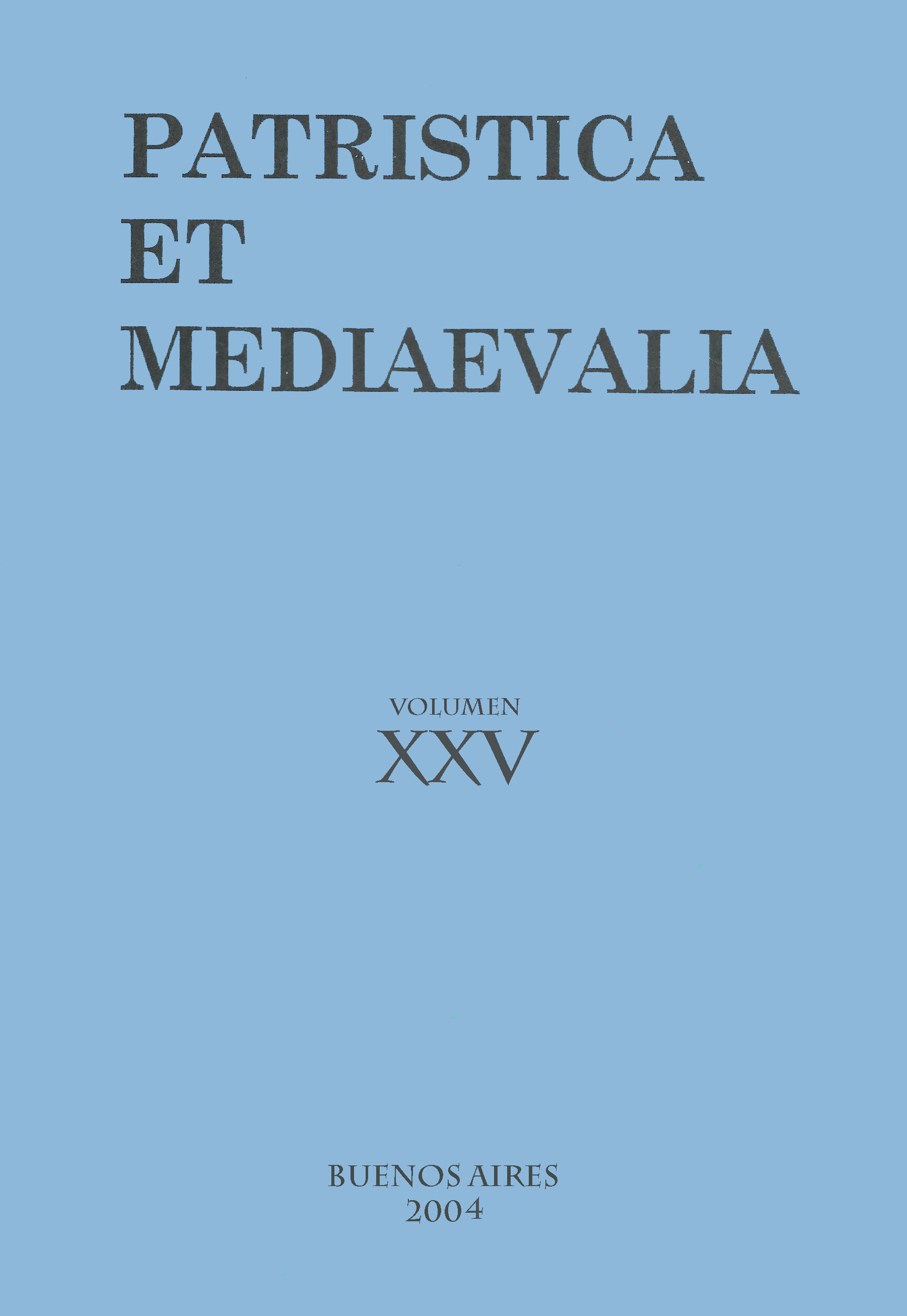Happiness and knowledge in some Masters of Arts before 1250. An analysis of some commentaries on the Book I of Nicomachean Ethics
Abstract
The masters of Arts were immersed in an incredibly rich intellectual environment from which they took many tools but to which they also contributed. Although they cultivated the literal genre of commentary it does not mean that they only repeated the theories of others. Usually, those commentaries are original constructions that almost use the commented work as an excuse to expose a personal doctrine. The case of the masters of Arts is eloquent. The commentaries on the Ethica Noua (the Latin translation of book I of Nicomachean Ethics) include contents that largely exceed those of the first book of Nicomachean Ethics.Downloads
References
Bianchi, L. (1999). Censure et liberté intellectuelle à l’Université de Paris (XIIIe-XIVe siècles). Paris: Les Belles Lettres.
D’Ancona Costa, C. (1995). ‘Philosophus in libro De Causis’, Le Liber de Causes comme ouvrage aristotélicien dans les commentaires de Roger Bacon, du ps. Henri de Gand et du ps. Adam de Bocfeld. En D’Ancona Costa, C. Recherches sur le Liber de Causis. Paris: Vrin, 195-228.
De Libera, A. (1993). La Philosophie Médiévale. Paris: PUF (Collection Premier Cycle).
Gauthier, R. A. (1975). Le cours sur l’Ethica Nova d’un maître ès arts de Paris (1235-1240). Archives d’histoire doctrinale et littéraire du Moyen Âge, 42, 71-141.
Gauthier, R. A. (1963). Arnoul de Provence et la doctrine de la fronesis vertu mystique suprême. Revue de Moyen Âge Latin, 19, 129-170.
Gauthier, R. A. (1982). Notes sur les débuts (1225-1240) du premier ‘averroïsme’. Revue des sciences philosophiques et théologiques, 66, 321-374.
Gauthier, R. A. (1982). Le traité De Anima et de potenciis eius d’un maître ès arts (vers 1225). Revue des sciences philosophiques et théologiques, 66, 3-55.
Lafleur, Cl. (1988). Quatre introductions à la philosophie au XIII siècle. Montréal: Institut d’études médiévales / Paris: Vrin.
Lafleur, Cl. (1992). Le ‘Guide de l’etudiant’ d’un maître anonyme de la Faculté des Arts de Paris au XIIIe siècle, Édition critique provisoire du ms. Barcelona, Arxiu de la Corona d’ Aragó, Ripoll 109, ff. 134ra-158va, avec la collaboration de J. Carrier. Québec: Faculté de Philosophie, Université Laval.
Lafleur, Cl. Avec la collaboration de J. Carrier (2000). Une figure métissée du platonisme médiéval: Jean le Page et le prologue de son commentaire (vers 1231-1240) sur l’Isagoge de Porphyre. In Melkevic, B. & Narbonne, J. M. (eds.). Une Philosophie dans l’Histoire, Hommages à Raymond Klibansky. Québec: Les Presses de l’Université Laval, 105-160.
Lafleur, Cl. Avec la collaboration de J. Carrier (2000). Abstraction, séparation et tripartition de la philosophie théorétique: quelques éléments de l’arrière-fond farabien et martien de Thomas d’Aquin, Super Boetium De Trinitate, question 5, article 3. Recherches de théologie et philosophie médiévales, 67(2), 249-269.
Lafleur, Cl. (2003). Dieu, la théologie et la métaphysique au milieu du XIIIe siècle selon des textes épistémologiques martiens et thomasiens. Québec: Faculté de Philosophie, Université Laval (Cahiers du Laboratoire de Philosophie Ancienne et Médiévale de la Faculté de Philosophie de l’Université Laval, XIII).
Pattin, A. (1966). Pseudo Aristote, Liber de Causis, éd. établie à l’aide de 90 manuscrits, avec introduction et notes par Adriaan Pattin. Leuven: Ultgave van Tijdschrift voor filosofie.
1. The authors who publish in this magazine accept the following conditions:
-
They retain the copyright and grant to the magazine the right of the first publication, with the work registered under the Attribution-ShareAlike 4.0 International License that allows third parties to use what is published as long as they mention the authorship of the work and the first publication in this magazine.
-
They can make other independent and additional contractual agreements for the non-exclusive distribution of the version of the article published in this magazine (eg. include it in an institutional repository or publish it in a book) provided that they clearly indicate that the work was first published in this journal.
-
They are allowed and recommended to publish their work on the Internet (for example on institutional or personal pages).
2. AutoArchive Conditions. Authors are allowed and encouraged to distribute post-print electronic versions of their manuscripts because it promotes their circulation, a possible increase of quotation and a major reach among the Academic community. Color RoMEO: blue.













